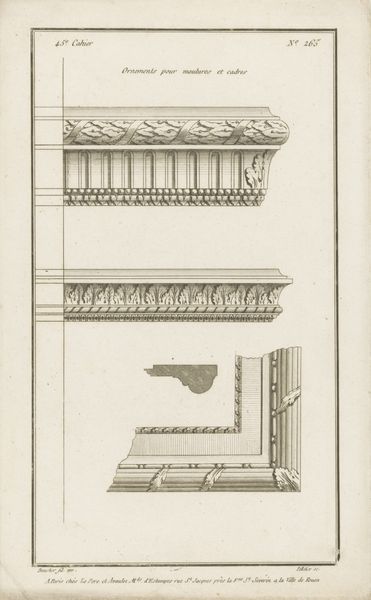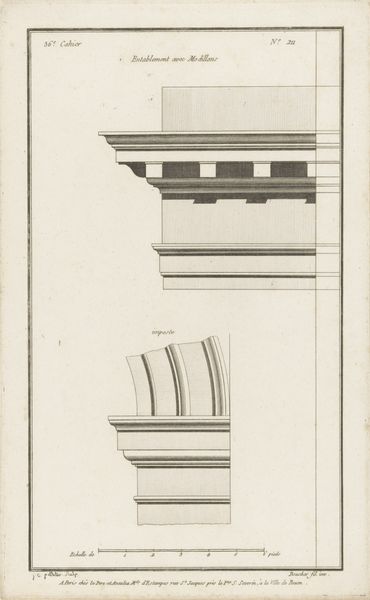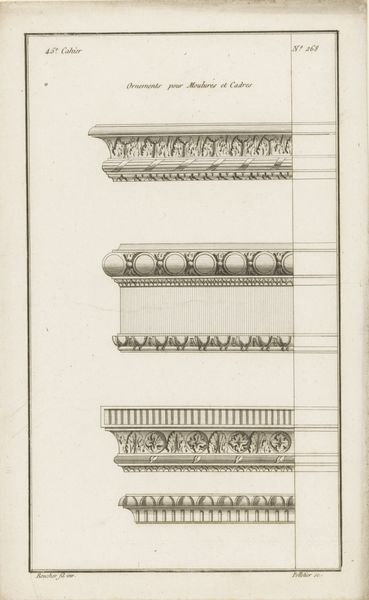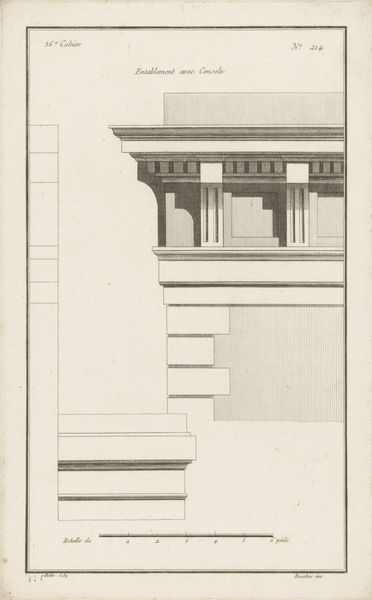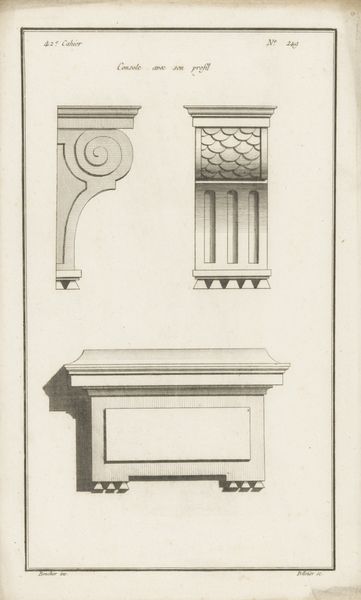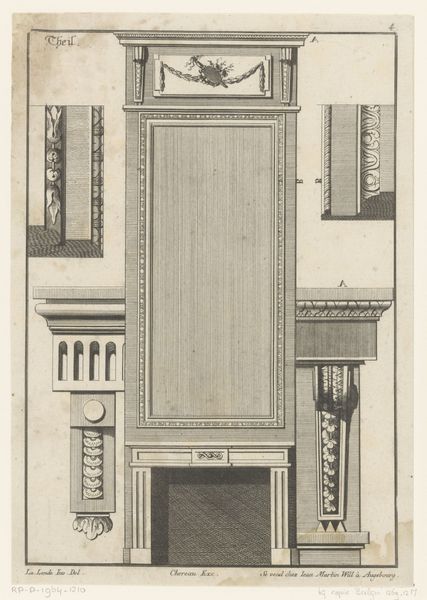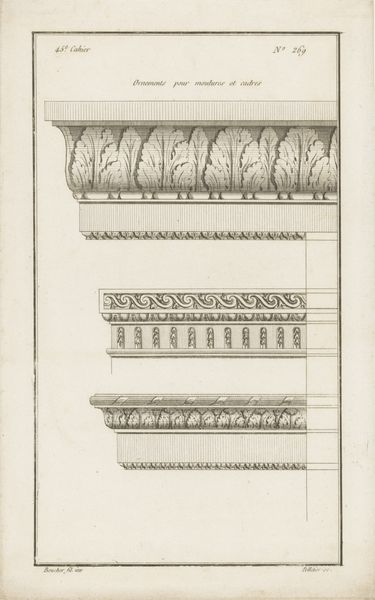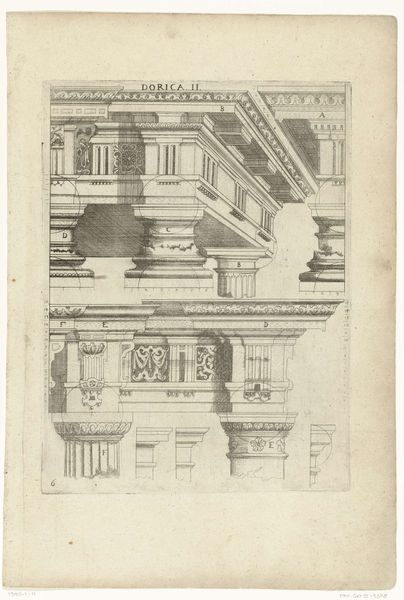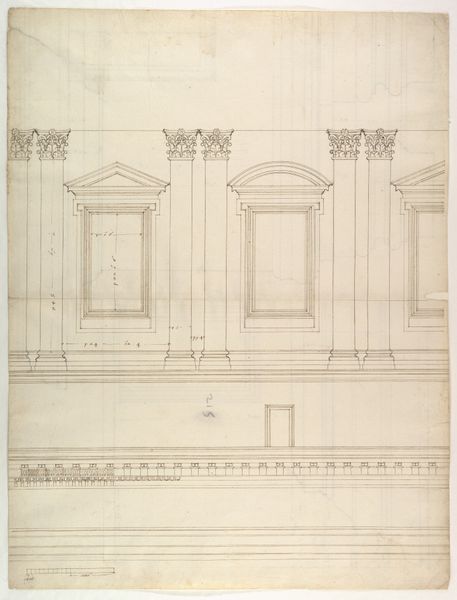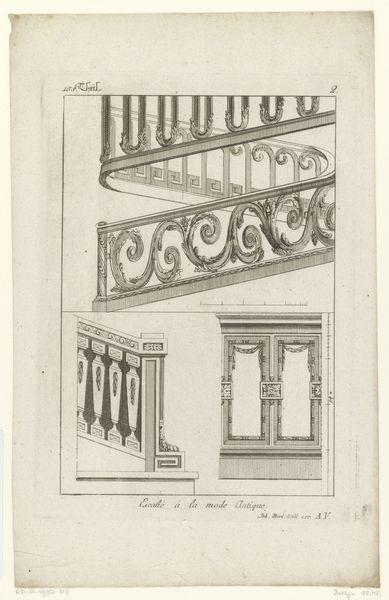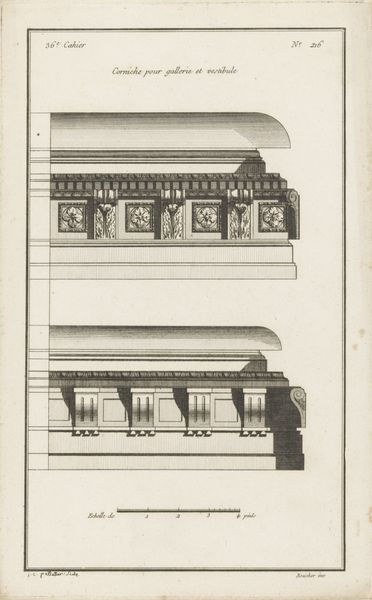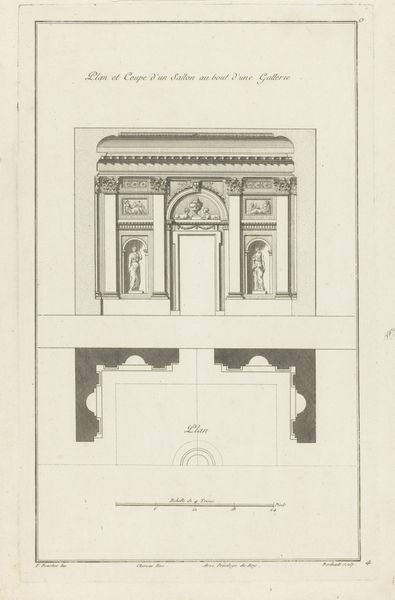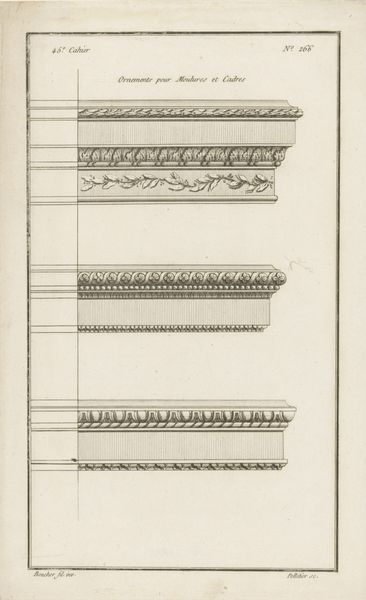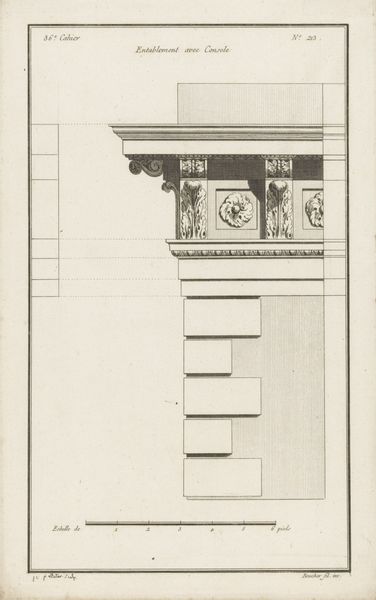
drawing, paper, engraving, architecture
#
drawing
#
neoclacissism
#
paper
#
form
#
geometric
#
line
#
academic-art
#
engraving
#
architecture
Dimensions: height 330 mm, width 205 mm
Copyright: Rijks Museum: Open Domain
Curator: Welcome! Let’s turn our attention to this fascinating print. We’re looking at "Kroonlijst en plint" – that translates to "Cornice and plinth" – created between 1772 and 1779 by Jean Pelletier. It's an engraving on paper. You can find it here at the Rijksmuseum. Editor: It's so precise. The lines, the shadows – they’re giving me a deeply calming sense of order, almost like a perfectly organized bookshelf. Curator: Yes, Pelletier’s dedication to detail is striking! The work is firmly rooted in Neoclassicism, which prized symmetry and clarity. Notice the geometric precision. It really emphasizes line over anything else. Editor: It does. Everything is so balanced, so controlled. What does it tell us about architectural design and that period, the 18th century? Curator: It offers a blueprint for ideal form, influenced heavily by classical Greek and Roman architecture. See how Pelletier meticulously depicts each molding and curve of the cornice and plinth. This wasn't just about aesthetics; it was about conveying ideals of reason and order. The goal was to inspire admiration and emulate these ideal forms in architectural practice. Editor: So it was less about breaking boundaries, and more about, well, upholding them, within these established parameters? I’m getting a sense of what buildings "should" be like in this piece – an instruction manual for creating these features! It gives me insight into how architecture was really regarded, maybe beyond aesthetics. Curator: Precisely! And by using engraving, Pelletier could disseminate these designs widely, making them accessible to architects and artisans. These principles shaped the landscape of Europe! It offers a glimpse into a time where architectural form was both art and applied science, imbued with philosophical meaning. Editor: Thanks. Seeing this work certainly alters my lens when imagining 18th-century spaces! Curator: I completely agree. These intricate lines open a door. I see more than just drawings, but glimpses into aspirations of permanence, of civilization, really carved out of ink and paper!
Comments
No comments
Be the first to comment and join the conversation on the ultimate creative platform.
